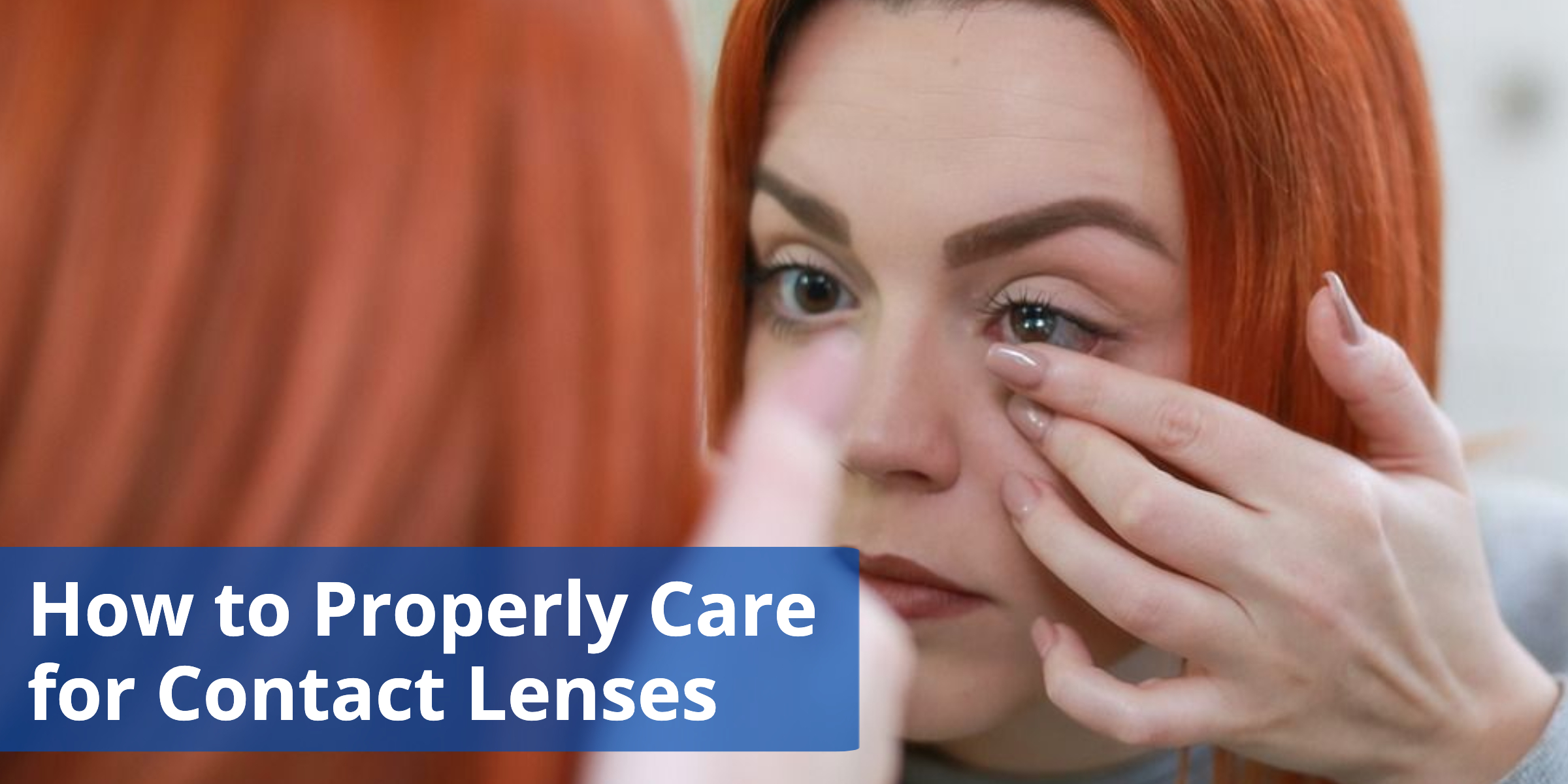
There are many different brands and types of contact lenses and solutions. In addition to discussing the proper use and care of your contacts with your optometrist or ophthalmologist, read the instructions on the lenses and solution packaging before using them for the first time. It is important to follow the manufacturer-recommended procedures.
The most popular and widely used contacts are soft lenses used in conjunction with a multi-purpose solution. The following steps are generally applicable for such but do not replace the instructions of your eye doctor and manufacturer.
Removal, Cleaning, and Storage of Soft Contacts
- Wash your hands using antibacterial soap that is free of additives, such as fragrances or moisturizers.
- Dry your hands with a lint-free towel.
- Check your contact lens case. If it has solution in it from previous use, discard the old solution and rinse thoroughly with new solution – not tap water. Tip: Every time you put your contacts in, rinse the case with fresh solution and air dry.
- If you are over a sink, place a washcloth over the drain to prevent dropping them down in. Remove one of your lenses.
- Cup your hand, put the lens in your palm, and add about a tablespoon of contact lens solution.
- Gently rub each side of the lens against your palm for the amount of time directed on the solution bottle.
- Rinse each side of the lens with a firm stream of fresh solution.
- Place it in one of the case’s wells, making sure it is on the correct side, and fill the well with solution.
- Repeat with the other lens.
- Soak for the directed amount of time, typically between four and eight hours, depending on the brand of solution.
Some solutions are “no-rub”, and daily disposable lenses don’t need to be cleaned since they are thrown away after one use. Most contact lens solutions are designed for soft lenses and cannot be used on gas permeable lenses (also known as GP, RGP or oxygen-permeable lenses.)
Contact Lens Hygiene
These are the most common risky contact lens hygiene behaviors:
- Refilling disinfecting solution instead of entirely replacing it
- Rinsing or storing contact lenses in tap water
- Moistening a lens with saliva, exposing it to bacteria
- Showering, bathing, washing face while wearing contacts
- Wearing contacts when swimming (also in hot tub and saunas)
- Sleeping (overnight or even just napping) without first removing contacts
- Wearing longer than the recommended amount of time
- Extending the recommended “lifetime duration” of lenses
- Not frequently replacing contact lenses case
- Using lubricating or red-eye drops that are not approved to be used with contacts.
Contact Lens Solution
Only use the contact lens solution recommended by your eye care professional. Be sure to check the expiration date and the discard date (typically 90 days after opening but varies depending on brand and type of contact solution.)
Use fresh solution every time you store your contacts. It is tempting to just ‘top it off’ when the solution in your case is still almost full from last use, however the disinfectant dissipates over time. Adding more solution does not offset that enough to reduce bacterial growth. It is important to discard the used solution and entirely replace it every time you remove and store your lenses.
Some other tips to keep the solution sterile is to avoid touching the tip of the solution bottle to anything including fingers or the contact lens case, and don’t put the solution in a different bottle, for example, a smaller bottle for traveling.
Water
Never rinse or store lenses in water, and make sure your hands are dry before handling your contact lenses. It isn’t intuitive, but water – even filtered tap water – is not safe for contacts, as it can contain harmful microorganisms.
For the same reason, bathing, showering, washing your face, swimming, or soaking in a hot tub while wearing contact lenses all pose an increased risk of infection. Acanthamoeba is one the most common organisms, prevalent in bodies of water such as lakes and oceans. Though rare, acanthamoeba keratitis ( infection of the cornea by Acanthamoeba) mostly affects contact wearers. It is not easily treated and can impair vision, even causing blindness.
If lenses are exposed to water, remove and clean thoroughly with solution. If possible, disinfect for the manufacturer-recommended amount of time before wearing the contacts again.
New Lenses and Cases
Replace contact lenses as frequently as instructed by your optometrist. It is common to want to extend the usage of something but not worth the risk of eye irritation or infection.
After putting contacts in, rinse your contact lens case with fresh solution – not tap water – and leave it open to air dry. Replace your lens cases every three to four months to ensure sterile storage.
Sleeping
Sleeping in your contacts steeply increases the risk of eye infection by up to 6-8 times and can also cause a corneal ulcer. Contact lenses restrict oxygen and moisture that the corneas need to stay healthy; sleeping in them further limits oxygen and hydration.
If you do happen to fall asleep wearing your contacts, they will probably feel dry and stuck to your eyes. Drink lots of water and apply contact-safe eye drops to rehydrate before attempting to remove them. Ideally, wear glasses for a day or two before wearing contacts again. If you feel any eye discomfort after a couple of days, call your optometrist to schedule an eye appointment.
Contacts and Cosmetics
You can safely wear makeup and contacts, just be sure to follow these guidelines:
- Don’t apply lotion to your hands or face before handling contacts. It can leave a film that will irritate your eyes and potentially damage the lenses.
- Put in soft contacts before applying makeup.
- Put in RGP lenses after applying makeup.
- Remove contacts before washing your face and removing makeup.
- Only wear your own mascara, replace it every season, and avoid waterproof and lengthening formulas.
- Don’t apply eyeliner to the waterline of your eyelids.
- Be careful to not expose lenses to perfume, hairspray, or eyelash glues.
- Use water-based, hypoallergenic lotions and foundations.
Are You Experiencing Eye Irritation or Blurry Vision?
There may be something wrong if your contacts aren’t comfortable. If you experience any of the below symptoms, call Gulf Coast Eye Institute at 844-485-3202 to schedule an appointment, and discontinue wearing contacts until the exam.
- Blurry sight, especially if a sudden change in vision
- Eye irritation or discomfort, including burning, itchy, red eyes, swollen eyelids, pain in or around eyes
- Contact lens/es feel scratchy or gritty
